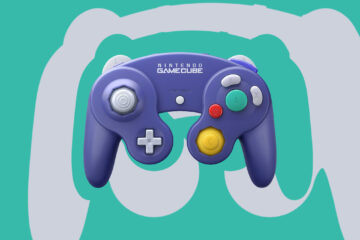G’bye Assistant, hello Gemini! | Image: Google
After a few years of iterative updates, Wear OS 6 is shaping up to be a significant leap forward. For starters, Gemini will replace Google Assistant on the wrist alongside a big Material 3 Expressive redesign that takes advantage of circular watch faces. Oh, and for the third year running, the latest Wear OS will also come with some battery life improvements.
“Over the past couple of years, we really completely reimagined Android with Gemini right at the center, and now we’re expanding Gemini beyond the phone,” says Jaime Williams, Wear OS’ product manager.
Williams says that adding Gemini is more than just replacing Assistant, which is already available on many Wear OS watches. Like most generative AI, one of the benefits is better natural language interactions, meaning you won’t have to speak your commands just so. Gemini in Wear OS will also interact with other apps. For example, you can ask about restaurant reservations, and Gemini will reference your Gmail for that information. Williams also says it’ll understand more complex queries, like summarizing information. You can also still use complications, the app launcher, a button shortcut or say “Hey Google” to access Gemini.
Gemini will require an internet connection. That means a Bluetooth connection via your phone, or a Wi-Fi or LTE connection on the watch. Williams says the team is looking into offline capabilities down the line but declined to comment on exact timing.
“Gemini is independent of Wear OS 6,” Williams says, explaining that while certain capabilities will be tied to Wear OS 6, it’ll be available on every Wear OS device with Assistant running on it today. (Meaning, if you have a Wear OS watch that doesn’t have Assistant, it’s not getting Gemini either.)
Despite that, this is still encouraging news when you consider the platform’s struggle to integrate Assistant. That was heavily delayed when Google transitioned from Wear OS 2 to a merged Wear OS 3 platform with Samsung’s Tizen OS. Fossil took two years before ultimately quitting the market. And while some Wear OS watches still don’t have Assistant, this hints that the transition to Gemini may be less messy overall.
Wear OS 6 will sport Google’s new Material 3 Expressive design language. “We wanted to move beyond something that was more functional to create something that has a deeper connection to you. With Wear OS 6, the first main thing we did was really embrace the circle,” says Lily Darling, Wear OS’ visual and motion lead.
Darling demurred when asked if this meant Wear OS (and therefore Google) was declaring that it’s circular displays or bust. However, she noted that Google decided to “elevate every design component to celebrate the round form factor.” That includes everything from the layouts and font choices to scrolling animations and transitions between screens. On-screen buttons have been tweaked to “hug the display” so they’re easier to tap, while Tiles and notifications are more glanceable. Notifications now include avatars and embedded thumbnail images, so you can quickly see who’s texting or emailing you. Color theming makes the jump from Android to Wear OS, so you can quickly change things up to match your phone or outfit.
Google didn’t have as much to share about Wear OS 6 performance besides a modest “up to 10 percent” increase in battery life. That’s perhaps not the most exciting update, but Google’s VP and GM of Wear OS Bjorn Kilburn says it’s a consistent ask from smartwatch users.
“It’s a really hard problem and it’s a game of inches. We keep chipping away at it,” Kilburn says, noting that not every Wear OS user will see battery gains equally. He says the team has improved power efficiency when using the watch to play or control media. So, if that’s something you use a Wear OS watch for, you can expect to notice it more than someone who never uses their watch for that purpose.
As for why Google is choosing to roll out a more substantive update this year, Kilburn says that’s partly a matter of timing. Bigger updates like these, he says, are a long time in the making. But more specifically, he explains it was an intentional move to ensure the phone and watch “came together.” Under the hood, he says, Android 16 and Wear OS 6 share the same code base. That enabled Google to speed up bringing Wear OS to parity with what’s available on Android phones.
“These are two really important devices that people have,” Kilburn says, noting Android and Wear OS teams spent a lot of time making sure plans lined up. That way, “at least your phone and watch can feel like they really belong together and share the same overall design ethos at the same time.”

